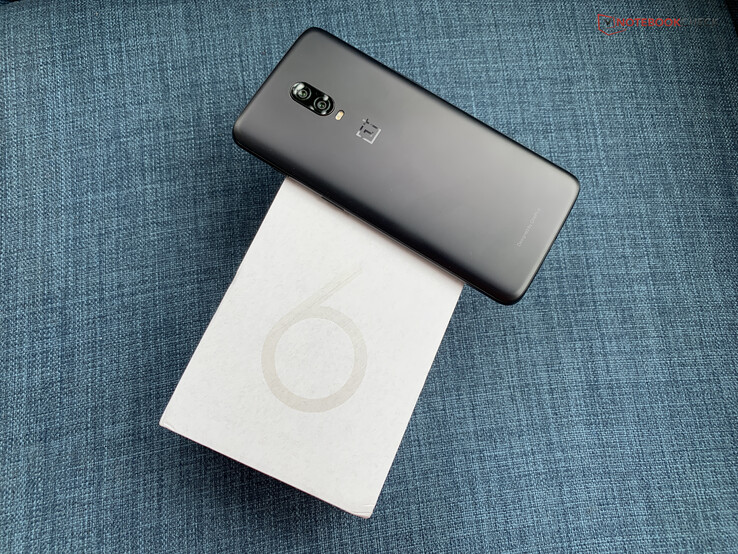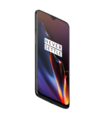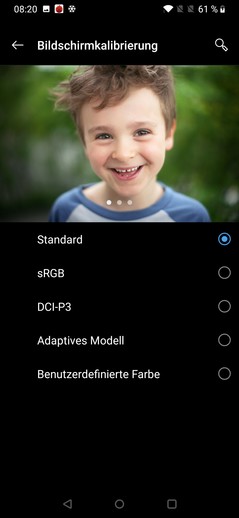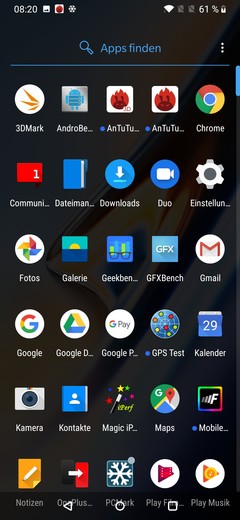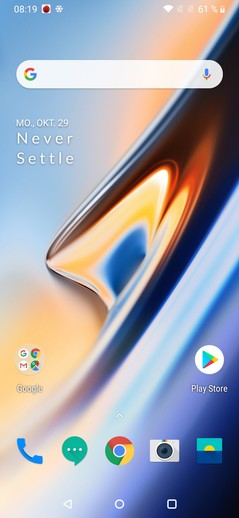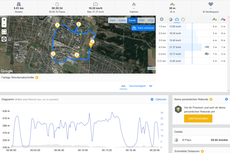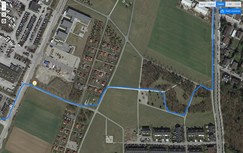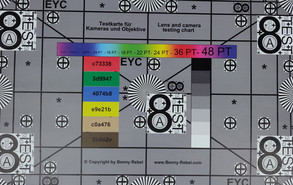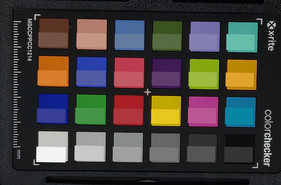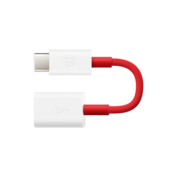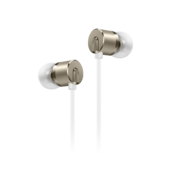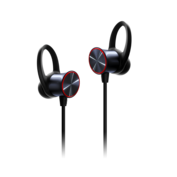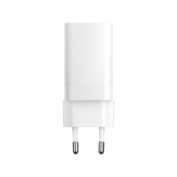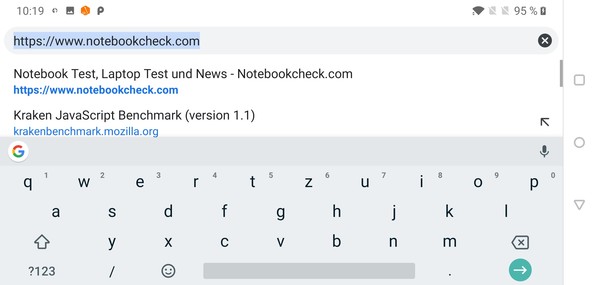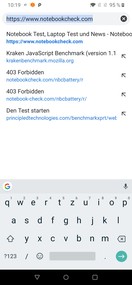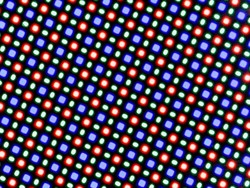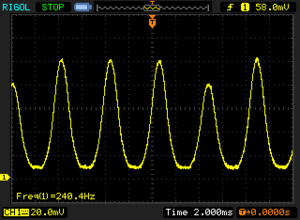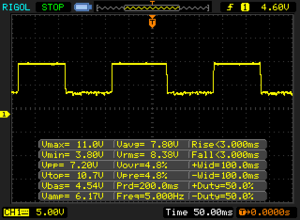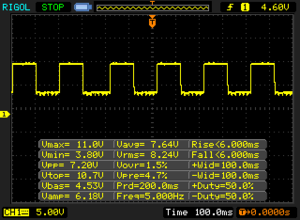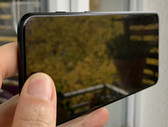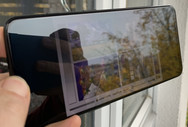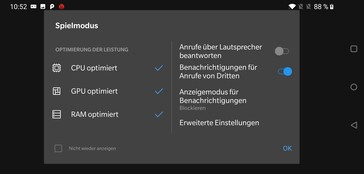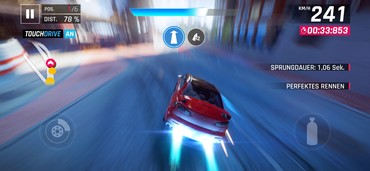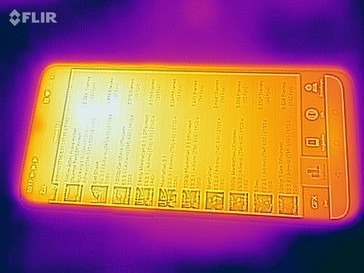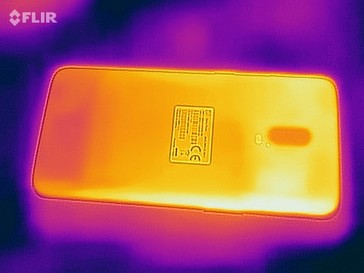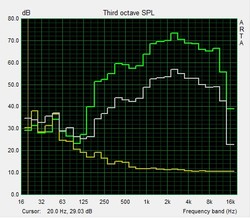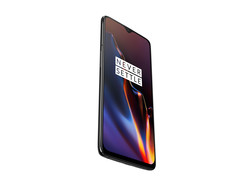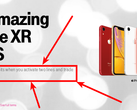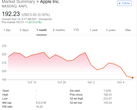OnePlus 6T Smartphone Review
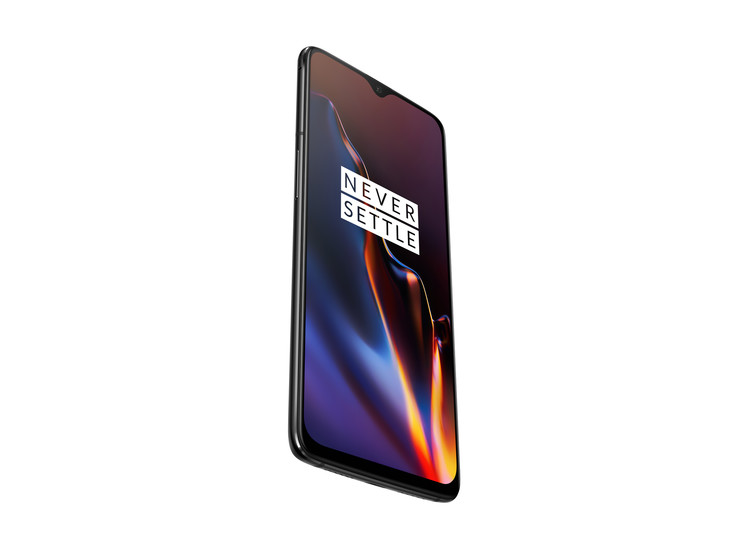
It is that time again, OnePlus has released a new flagship smartphone; cue established manufacturers shaking in a corner somewhere. OnePlus devices are generally great value for money with premium hardware, but they typically lack a few features that more expensive flagships offer. OnePlus’ Oxygen OS tends to run leaner than other custom versions of Android and only makes light changes at that. In short, recent OnePlus smartphones have been great all-round devices and it is no wonder that the company has gone from strength to strength. The company sold one million OnePlus One devices during their production run. Five years later, OnePlus had sold over one million OnePlus 6’s within twenty-two days of the device’s release. The company has stuck to its method of selling one smartphone at a time throughout that period and they continue to be the company’s main source of revenue despite dipping their toes into televisions and backpacks.
The OnePlus 6T is a modest upgrade over the OnePlus 6. OnePlus has increased the device’s screen-to-body ratio by shrinking its notch, and it has moved the fingerprint sensor beneath the screen. The other upgrades are more minor, whether that be its improved Gorilla glass or its larger battery. The 6T comes in the same colours as its predecessor and largely costs the same too. The base model costs $20 more, but OnePlus has doubled the storage to 128 GB. The midrange version also costs £10 more in the UK for some reason. These pricing alterations aside, OnePlus’s latest flagship remains miles cheaper than its competitors.
We have chosen to compare the OnePlus 6T against flagships smartphones such as the Apple iPhone XS, the Google Pixel 3, the Huawei P20 Pro, the Samsung Galaxy S9 Plus and the Sony Xperia XZ2 Premium. It is worth noting that the OnePlus 6T costs at least several hundred dollars less than all our comparison devices.
Case
The 6T is difficult to distinguish from its predecessor unless you know what you are looking for. OnePlus has moved the fingerprint sensor from the back case to beneath the display and shifted its logo higher up in its place, which creates a cleaner look than the 6’s rear case. Likewise, OnePlus has increased the 6T’s screen-to-body ratio to 86% by shrinking the notch and moving the earpiece to the top edge of the frame. The notch now resembles a teardrop, while its predecessor’s looks more rectangular and is noticeably larger. We will continue to see notched displays until the technology needed for in-screen cameras and sensors becomes commercially viable.
The 6T continues with its predecessor’s simple, yet stylish design that feels good in the hand. The device is 8 g (0.03 oz) heavier than the 6 and has a marginally larger footprint. OnePlus has not added IP dust or water protection though, so do not try your hand at underwater photography with your shiny new 6T.
Our test device is as sturdy and well-built as its predecessor too. Unfortunately, there are some rough edges between materials, particularly between the display and frame, that do not feel as premium as the rest of the device. Initial torture tests demonstrate that the OnePlus 6T will withstand being bent and scratched.
The 6T has a Gorilla Glass 6 display, which is designed to survive more severe drops than previous versions. However, some YouTube videos have shown that is no more scratch resistant than the supposedly inferior Gorilla Glass with which OnePlus equipped the 6.
The back is made from glass too, and is available in a glossy or matte black finish. OnePlus refers to these as Midnight Black and Mirror Black respectively. The company regularly releases limited edition colour variants too, although none were announced with the device’s official unveiling.
Sadly, OnePlus has removed the headphone jack and replaced it with a reportedly decorative second speaker grille. The company has justified the jack’s removal by claiming that it took up too much space internally and that 60% of their users use wireless headphones. The latter reason disregards 40% of their userbase though. Fortunately, there is a USB Type-C to 3.5 mm jack adapter in the box. However, it remains a shame that OnePlus have followed other manufacturers in ditching a widely used and useful port.
Connectivity
OnePlus currently advertises four versions of the 6T:
- Mirror Black – 6 GB RAM & 128 GB storage - $549 (£499)
- Mirror Black – 8 GB RAM & 128 GB storage - $579 (£529)
- Midnight Black – 8GB RAM & 128 GB storage - $579 (£529)
- Midnight Black – 8GB RAM & 256 GB storage - $629 (£579)
By contrast, the cheapest OnePlus 6 costs $529, which is $20 cheaper than the cheapest 6T. However, the former only came with 64 GB of storage, and a 128 GB OnePlus 6 cost $579. So, while the 6T has a slightly higher starting price, it effectively costs $30 less to get the same storage capacity albeit with 2 GB less RAM. Oddly, the 8 GB/128 GB options cost £10 more in the UK than their predecessors and yet the price has not changed between generations for the US market.
The 6T has no microSD card expansion, but it is a Dual-SIM device. The device supports NFC and Bluetooth 5.0 too, but OnePlus still equips its devices with a slower USB 2.0 Type-C port. The company claims that fewer people now transfer large volumes of data over a wired connection, so equipping the device with a faster USB 3.1 port would apparently be redundant.
Software
There had been reports that Oxygen OS would be receiving a complete redesign. However, OnePlus has since confirmed that most new changes are because of the move to Android 9 Pie, rather than being an Oxygen OS-based UI refresh. We did not notice many differences during testing apart from the new gesture-based control and that the on-screen volume controls have moved to the bottom of the display. These are both features of stock Android 9 Pie though.
Oxygen OS sticks close to a stock Android experience save for a few handy additions. OnePlus includes a system-wide dark mode, for example, which even affects the Phone app. Moreover, you can choose an accent colour from the complete RGB spectrum, while the reading mode changes the display to black and white, which should help when reading eBooks or documents.
Our test device has Android security patch level 5 September 2018 installed at the time of writing, which is reasonably recent. We expect that OnePlus will issue a security update in line with the device’s official release on November 7th or shortly thereafter. The company has been quick to release new security updates with previous devices and keeps them updated with new versions of Oxygen OS for years after their initial release. Hence, we expect OnePlus to regularly update 6T for at least a few years.
Overall, the OS on our test device feels snappy despite being pre-release software. It is particularly fun to navigate through menus and endless settings options without any delays.
Communication & GPS
The 6T’s Wi-Fi paper specifications are identical to those of the OnePlus 6 and still support all modern Wi-Fi standards. However, our comparison tables below make for frightful reading. Our test device currently achieves over 500 MBit/s slower transfer speeds than its predecessor when connected to our reference Linksys EA8500 router and tested with iperf3 Client Wi-Fi tests.
Websites still load quickly despite its handicapped Wi-Fi performance though. Moreover, the 6T has consistent Wi-Fi performance even when using it at some distance from a router. We saw comparable Wi-Fi speeds when testing the device around 10 metres (~3ft) and three walls away from the router compared to when we used it in the vicinity of the Linksys EA8500.
Reassuringly, OnePlus has confirmed that the next software release will increase our test device’s Wi-Fi performance to OnePlus 6 speeds. Retail versions of the OnePlus 6T should have none of the Wi-Fi speed issues that our pre-release test device currently has.
As with its predecessor, the 6T supports numerous LTE frequencies so you should have no issues with finding LTE coverage in even distant countries. The device supports up to 1 GBit/s download and 150 MBit/s upload speeds over LTE too. Additionally, our test device maintained decent LTE reception throughout testing in built-up areas and even in buildings.
The 6T supports VoLTE and VoWiFi, but these technologies will only work on carriers that specifically support them for the device. Carriers typically list which devices for which they support VoLTE and VoWiFi on their websites. Vodafone Germany does not list the 6T as a supported device, for example, which means that the functionality will not work on that network. However, 02 Germany does, so you should have no issues with making calls over Wi-Fi or to any VoLTE-enabled device over 4G.
Unfortunately, we could not verify how well VoLTE works as our test device would switch to HSPA as soon as we made a call. We suspect that this is a network-related issue though, and not something amiss with the device itself.
Please note: VoLTE and VoWiFi are not activated by default. You must first enable the buttons within Settings before you can switch them on. The instructions on how to do this can be found here. These are for the OnePlus 6, but they work for the 6T too
| Networking | |
| iperf3 transmit AX12 | |
| Sony Xperia XZ2 Premium | |
| OnePlus 6 | |
| Apple iPhone Xs Max | |
| Samsung Galaxy S9 Plus | |
| OnePlus 6T | |
| iperf3 receive AX12 | |
| Sony Xperia XZ2 Premium | |
| Samsung Galaxy S9 Plus | |
| OnePlus 6T | |
| Apple iPhone Xs Max | |
| OnePlus 6 | |
The 6T cannot locate us when using the device inside buildings with concrete ceilings. This does not improve when using the device next to a window either. Effectively, our test device can only find our location when we step outside, upon which it achieves a satellite fix with up to 3 metres (~10 ft) accuracy. Moreover, Google Maps found our location quickly and maintained decent accuracy throughout testing, while the compass immediately shows which way we are facing.
We also took the 6T on a bike ride with our Garmin Edge 520 to measure how closely OnePlus’ new device could keep to the route plotted by a professional navigation system. Our test device deviated by around 170 metres (~186 yd) over 5.34 km (~3.3 mi), which is acceptable. The main reason for this discrepancy is that the 6T lacks the cornering accuracy of the Garmin and often takes shortcuts between corners that the Garmin does not. The 6T plotted us on the correct side of the road when we cycled up to the bridge, which is not what every smartphone can achieve. Overall, the 6T is accurate enough for general navigation tasks, but we would recommend looking to a dedicated device if you need more precise location accuracy.
Telephone Features & Call Quality
The Oxygen OS phone app looks and feels like the Google equivalent, except that the latter also has a dark mode. The app always starts on the quick selection page, which displays call history and starred contacts. The keypad is hidden behind a circular button at the bottom of the display.
Unfortunately, the call quality over the earpiece is only average at best. Call partners are always audible, and the earpiece gets loud enough to even make calls in noisy environments, although all calls contain too much background noise for our liking. The microphone works well though, and always reproduced our voice clearly. Calls over speakerphone sound ok too, although they are also burdened by plenty of background noise. The microphone struggles to pick out voices too, so we would recommend speaking louder over speakerphone than you would when making a call over the earpiece.
Cameras
OnePlus has equipped the 6T with the same cameras that they used in its predecessor. The 6T has a 16 MP front-facing Sony IMX 371 sensor, while its dual rear-facing cameras are Sony IMX 376K and IMX 519 sensors, the latter of which supports optical image stabilisation (OIS).
The company has collaborated with photographer Kevin Abosch to further optimise its camera software, particularly in portrait mode. The 6T takes better low-light photos than its predecessor too, although HDR photos look identical.
The front-facing camera, which now sits within a teardrop-shaped notch, produces colourful and sharp pictures. Bright areas tend to suffer from a lack of detail, but overall the camera produces photos that could fool us into thinking that they had been taken with a rear-facing camera. OnePlus has not included an LED flash to help brighten selfies taken in low-light, but the device compensates for this by using the display as a quasi-flash instead.
The main camera has its shortcomings too. Foreground objects are not as well exposed as they are by more expensive competitors such as the iPhone XS Max, a difference that is particularly noticeable when comparing full-size photos side-by-side. Subjectively, photos look sharp and we even liked the photos that the main camera produced in low-light conditions. Overall, the 6T’s main camera is a step above that which OnePlus used on the 5T; photos look much sharper, while scenes are captured in more detail too.
OnePlus has been beating its drum about the quality of the 6T’s cameras in low-light conditions, so we decided to put our device to the test, the results of which you can see at the bottom of our gallery. Our conclusions after a one-hour photo session at dusk is thus: HDR and long exposure photos look great when shot in Pro mode, but the special night mode is superfluous. Photos taken in the latter mode often look like those shot in Pro mode, but the results were inconsistent with some photos coming out sharper, while others looked blurrier. OnePlus has also integrated Google Lens directly within the default camera app.
The 6T can record videos in up to 4K at 60 FPS, but videos are limited to five minutes when shot at these settings. Videos look good overall and the sensor effortlessly alters the exposure to changing lighting conditions. The default camera app can also record videos in up to 240 FPS at 1080p or 480 FPS at 720p for a slow-motion effect, although the 6T can only record these videos for up to a minute. The videos will have significantly longer runtimes because of the higher FPS though. Videos shot at these frame rates look good overall and you can edit videos to change which sections are played back in slow motion should you wish.
We also subjected our test device to further camera tests under controlled lighting conditions. The main camera takes sharp photos in these conditions too, although colours are generally darker than the reference colours. Moreover, text set against red backgrounds tends to have blurrier edges than that which is surrounded by blocks of other colours.
Accessories & Warranty
The 6T comes with a quick charger, a USB Type-A to Type-C cable, a USB Type-C to 3.5 mm adapter, a silicone case and a SIM tool. All cables are well-made and are adorned with OnePlus’ signature red and white colours. OnePlus cables and chargers are also generally robust and long-lasting in our experience.
There are no headphones in the box, but the company sells its Bullets V2 USB Type-C headphones for $19.95 (£15.99) and a wireless version for $69 (£69). OnePlus also offers numerous other accessories on its website including an array of cases costing from $20.95 (£17.95) to $29.95 (£27.95) and additional chargers or cables among others. All accessories that will be available for the 6T and their prices are listed on OnePlus’ website.
The 6T comes with a twenty-four month manufacturers warranty. OnePlus also lists the prices of spare parts and repair costs on their website, which is helpfully more transparent than other manufacturers. Please see our Guarantees, Return policies and Warranties FAQ for country-specific information.
Input Devices & Operation
Our test device has Google GBoard pre-installed as its default keyboard, which functions just like on other devices. Other keyboards are available to download from the Google Play Store should you prefer a different keyboard app.
The touchscreen quickly and accurately reproduced our inputs throughout our tests. The touchscreen is evenly precise across the entire display too.
OnePlus continues to equip its devices with a mute switch, the likes of which we only see with iPhones; no other mainstream Android manufacturer implements mute switches on their devices. Its execution is better than Apple’s in our opinion as it allows users to cycle between silent, vibrate or loud mode whereas the Apple equivalent has only two settings. We find its inclusion particularly useful when we want to put our phone on silent but keep the device in our pocket, for example during a meeting.
One big change between the OnePlus 6 and the 6T is the fingerprint sensor. OnePlus have reportedly been testing in-screen fingerprint sensors since last year’s 5T, but the technology has not been ready enough for commercial use until now. The technology has matured since then though, and has made its way to the 6T. The device uses a green light to improve fingerprint recognition as previous in-screen sensors have lacked the speed and accuracy of other fingerprint sensors.
Unfortunately, the fingerprint sensor is not much better than the ones we have tested on the Vivo Nex Ultimate, the Porsche Design Huawei Mate RS or the Huawei Mate 20 Pro. Our test device’s in-screen fingerprint sensor is much slower and less accurate than those that OnePlus used on the 5T or 6.
We hope that OnePlus can improve its reliability with software updates. However, on current impressions, we would have preferred the company to have stuck to a rear-mounted sensor and continue to develop an in-screen alternative that is at least on par with its traditional counterparts. Moreover, you can only unlock the device from standby with the always-on display (AOD) deactivated. If you choose to use the AOD, then you will have to wake the device before unlocking it.
The 6T also supports facial recognition using the front-facing camera. The technology is not as sophisticated as Apple’s Face ID, although we could not spoof it by holding up pictures of our face. The face unlock is also less secure than the 6T’s fingerprint sensor, but it is considerably faster and more reliable at recognising us. The technology only struggles at night, but that is not surprising as it is only using the front-facing camera and is not supported by any other hardware such as an infrared sensor.
Display
The 6T has a 6.41-inch display that runs at a 2,340x1,080 native resolution. The 6T’s display is 60 pixels taller than the one that OnePlus used in its predecessor for reference. The 1080p resolution is lower than many modern flagship devices, but we think that this is sharp enough for most users.
OnePlus has once again used an Optic-AMOLED panel, which has broadly the same display values as the one in the OnePlus 6. Our test device achieved an average maximum brightness of 442 cd/m² irrespective of whether we turned on the ambient light sensor. The panel is noticeably more evenly lit than the one in its predecessor, but overall all differences are within manufacturing tolerances.
| |||||||||||||||||||||||||
Brightness Distribution: 95 %
Center on Battery: 437 cd/m²
Contrast: ∞:1 (Black: 0 cd/m²)
ΔE ColorChecker Calman: 2.21 | ∀{0.5-29.43 Ø4.78}
ΔE Greyscale Calman: 2.1 | ∀{0.09-98 Ø5}
99.6% sRGB (Calman 2D)
Gamma: 2.307
CCT: 6353 K
| OnePlus 6T Optic AMOLED, 2340x1080, 6.4" | OnePlus 6 Optic AMOLED, 2280x1080, 6.3" | Samsung Galaxy S9 Plus Super AMOLED, 2960x1440, 6.2" | Sony Xperia XZ2 Premium LCD-IPS, 3840x2160, 5.8" | Apple iPhone Xs Max OLED, 2688x1242, 6.5" | Huawei P20 Pro OLED, 2240x1080, 6.1" | |
|---|---|---|---|---|---|---|
| Screen | -6% | 9% | -10% | 28% | 30% | |
| Brightness middle (cd/m²) | 437 | 430 -2% | 565 29% | 477 9% | 656 50% | 569 30% |
| Brightness (cd/m²) | 442 | 437 -1% | 571 29% | 453 2% | 659 49% | 578 31% |
| Brightness Distribution (%) | 95 | 87 -8% | 96 1% | 86 -9% | 88 -7% | 95 0% |
| Black Level * (cd/m²) | 0.33 | |||||
| Colorchecker dE 2000 * | 2.21 | 2.3 -4% | 2.3 -4% | 2.1 5% | 1.7 23% | 1.3 41% |
| Colorchecker dE 2000 max. * | 4.27 | 4.6 -8% | 4.8 -12% | 8.2 -92% | 2.8 34% | 2.1 51% |
| Greyscale dE 2000 * | 2.1 | 2.4 -14% | 1.9 10% | 1.6 24% | 1.7 19% | 1.6 24% |
| Gamma | 2.307 95% | 2.28 96% | 2.16 102% | 2.28 96% | 1.998 110% | 2.31 95% |
| CCT | 6353 102% | 6160 106% | 6332 103% | 6425 101% | 6487 100% | 6401 102% |
| Contrast (:1) | 1445 |
* ... smaller is better
Screen Flickering / PWM (Pulse-Width Modulation)
| Screen flickering / PWM detected | 240 Hz | ≤ 99 % brightness setting | |
The display backlight flickers at 240 Hz (worst case, e.g., utilizing PWM) Flickering detected at a brightness setting of 99 % and below. There should be no flickering or PWM above this brightness setting. The frequency of 240 Hz is relatively low, so sensitive users will likely notice flickering and experience eyestrain at the stated brightness setting and below. In comparison: 53 % of all tested devices do not use PWM to dim the display. If PWM was detected, an average of 8118 (minimum: 5 - maximum: 343500) Hz was measured. | |||
We measure a 125 Hz pulse-width modulation (PWM) frequency across the entire luminosity range, which may cause eye strain or headaches for those who are PWM sensitive. Unfortunately, the device must use PWM to change display brightness because the AMOLED display has no backlight that could adjust luminosity.
The lack of backlighting has its benefits though. AMOLED displays can individually switch off pixels, which gives the 6T a theoretically infinite contrast ratio and allows it to display absolute black tones. We also used a spectrophotometer and the CalMAN analysis software to assess the colour accuracy of the 6T’s “Standard”, “sRGB” and “DCI-P3” display colour modes. The “sRGB” mode is the most colour accurate, like its predecessor, although the colours look slightly cooler than they do when the display is set to “Standard”. The “sRGB” mode covers practically all the sRGB colour space, but then again CalMAN is not 100% reliable at determining colour space coverage. Overall, the 6T has a relatively colour accurate display in any display mode, but it cannot match more expensive devices such as the Huawei P20 Pro.
Display Response Times
| ↔ Response Time Black to White | ||
|---|---|---|
| 6 ms ... rise ↗ and fall ↘ combined | ↗ 3 ms rise | |
| ↘ 3 ms fall | ||
| The screen shows very fast response rates in our tests and should be very well suited for fast-paced gaming. In comparison, all tested devices range from 0.1 (minimum) to 240 (maximum) ms. » 17 % of all devices are better. This means that the measured response time is better than the average of all tested devices (20.2 ms). | ||
| ↔ Response Time 50% Grey to 80% Grey | ||
| 12 ms ... rise ↗ and fall ↘ combined | ↗ 6 ms rise | |
| ↘ 6 ms fall | ||
| The screen shows good response rates in our tests, but may be too slow for competitive gamers. In comparison, all tested devices range from 0.165 (minimum) to 636 (maximum) ms. » 24 % of all devices are better. This means that the measured response time is better than the average of all tested devices (31.6 ms). | ||
The 6T is generally usable outdoors, but the display’s glossy finish catches plenty of reflections in direct sunlight. Some of our comparison devices have brighter displays too, which helps to combat any reflections that would otherwise make the display harder to read. We would have liked OnePlus to have equipped the 6T with a slightly brighter display, but this is being picky.
The 6T has great viewing angles too. We did not notice any brightness or colour distortions even at acute angles.
Performance
The Qualcomm Snapdragon 845 SoC powers the 6T, with which OnePlus also equipped the 6. Initial benchmarks show that the 6T is on par with other Snapdragon 845 powered devices such as the Xperia XZ2 Premium. The device feels snappy in daily use, while the ample amount of RAM ensures that there are no lags or stutters even with multiple apps open. The flagship-level SoC also means that you will have no restrictions on what you can download from the Google Play Store for years to come.
The Snapdragon 845 integrates an Adreno 630 GPU, which handles graphics. The GPU supports all modern graphics APIs, and its performance in our test device is comparable to that of other Adreno 630 powered devices.
| PCMark for Android | |
| Work performance score (sort by value) | |
| OnePlus 6T | |
| OnePlus 6 | |
| Samsung Galaxy S9 Plus | |
| Sony Xperia XZ2 Premium | |
| Huawei P20 Pro | |
| Average Qualcomm Snapdragon 845 (7998 - 13211, n=26) | |
| Work 2.0 performance score (sort by value) | |
| OnePlus 6T | |
| OnePlus 6 | |
| Samsung Galaxy S9 Plus | |
| Sony Xperia XZ2 Premium | |
| Huawei P20 Pro | |
| Average Qualcomm Snapdragon 845 (7360 - 9868, n=27) | |
| Basemark GPU 1.1 | |
| 1920x1080 Vulkan Medium Offscreen (sort by value) | |
| OnePlus 6T | |
| OnePlus 6 | |
| Huawei P20 Pro | |
| Average Qualcomm Snapdragon 845 (21.3 - 32.9, n=5) | |
| Vulkan Medium Native (sort by value) | |
| OnePlus 6T | |
| OnePlus 6 | |
| Huawei P20 Pro | |
| Average Qualcomm Snapdragon 845 (15.8 - 29.7, n=5) | |
| 1920x1080 OpenGL Medium Offscreen (sort by value) | |
| OnePlus 6T | |
| OnePlus 6 | |
| Huawei P20 Pro | |
| Average Qualcomm Snapdragon 845 (24.5 - 35.3, n=5) | |
| AnTuTu v7 - Total Score (sort by value) | |
| OnePlus 6T | |
| OnePlus 6 | |
| Samsung Galaxy S9 Plus | |
| Sony Xperia XZ2 Premium | |
| Apple iPhone Xs Max | |
| Huawei P20 Pro | |
| Average Qualcomm Snapdragon 845 (246366 - 299878, n=27) | |
| AnTuTu v6 - Total Score (sort by value) | |
| OnePlus 6T | |
| OnePlus 6 | |
| Samsung Galaxy S9 Plus | |
| Sony Xperia XZ2 Premium | |
| Huawei P20 Pro | |
| Average Qualcomm Snapdragon 845 (162183 - 242953, n=23) | |
| VRMark - Amber Room (sort by value) | |
| OnePlus 6T | |
| OnePlus 6 | |
| Huawei P20 Pro | |
| Average Qualcomm Snapdragon 845 (4598 - 4731, n=4) | |
| Basemark ES 3.1 / Metal - offscreen Overall Score (sort by value) | |
| OnePlus 6T | |
| OnePlus 6 | |
| Samsung Galaxy S9 Plus | |
| Apple iPhone Xs Max | |
| Huawei P20 Pro | |
| Average Qualcomm Snapdragon 845 (1169 - 1201, n=5) | |
| Average of class Smartphone (205 - 7731, n=36, last 2 years) | |
Web browsing feels as fast as its predecessor, which initial benchmarks confirm. Consequently, the 6T scores higher in browser benchmarks than the Xperia XZ2 Premium and the Galaxy S9 Plus, but it is still blown away by the iPhone XS Max. In daily use, complex HTML 5 websites such as Google Interland load quickly and run smoothly.
| JetStream 1.1 - Total Score | |
| Apple iPhone Xs Max (Safari 12) | |
| OnePlus 6 (Chrome 66) | |
| OnePlus 6T (Chrome 70) | |
| Average Qualcomm Snapdragon 845 (22.5 - 90.9, n=25) | |
| Sony Xperia XZ2 Premium (Chrome 68) | |
| Samsung Galaxy S9 Plus (Samsung Browser 7.0) | |
| Huawei P20 Pro (Chrome 65) | |
| Octane V2 - Total Score | |
| Average of class Smartphone (2228 - 121337, n=200, last 2 years) | |
| Apple iPhone Xs Max (Safari 12) | |
| OnePlus 6 (Chrome 66) | |
| OnePlus 6T (Chrome 70) | |
| Average Qualcomm Snapdragon 845 (3991 - 18275, n=28) | |
| Samsung Galaxy S9 Plus (Samsung Browser 7.0) | |
| Sony Xperia XZ2 Premium (Chrome 68) | |
| Huawei P20 Pro (Chrome 65) | |
| Mozilla Kraken 1.1 - Total | |
| Huawei P20 Pro (Chrome 65) | |
| Sony Xperia XZ2 Premium (Chrome 68) | |
| Average Qualcomm Snapdragon 845 (2154 - 11204, n=28) | |
| OnePlus 6 (Chrome 66) | |
| OnePlus 6T (Chrome 70) | |
| Samsung Galaxy S9 Plus (Samsung Browser 7.0) | |
| Average of class Smartphone (257 - 28190, n=155, last 2 years) | |
| Apple iPhone Xs Max (Safari 12) | |
| WebXPRT 3 - Overall | |
| Average of class Smartphone (38 - 380, n=35, last 2 years) | |
| Apple iPhone Xs Max (Safari 12) | |
| OnePlus 6 (Chrome 66) | |
| Average Qualcomm Snapdragon 845 (19 - 103, n=17) | |
| Sony Xperia XZ2 Premium (Chrome 68) | |
| Huawei P20 Pro (Chrome 65) | |
| Samsung Galaxy S9 Plus | |
| WebXPRT 2015 - Overall | |
| Apple iPhone Xs Max (Safari 12) | |
| OnePlus 6T (Chrome 70) | |
| OnePlus 6 (Chrome 66) | |
| Average Qualcomm Snapdragon 845 (96 - 291, n=23) | |
| Sony Xperia XZ2 Premium (Chrome 68) | |
| Huawei P20 Pro (Chrome 65) | |
| Samsung Galaxy S9 Plus (Samsung Browser 7.0) | |
* ... smaller is better
The performance of the 6T’s UFS 2.1 storage is also on par with the OnePlus 6 and is comparable to that of more expensive devices. Apps load quickly, while the device access data without delay.
| OnePlus 6T | OnePlus 6 | Samsung Galaxy S9 Plus | Sony Xperia XZ2 Premium | Huawei P20 Pro | Average 128 GB UFS 2.1 Flash | Average of class Smartphone | |
|---|---|---|---|---|---|---|---|
| AndroBench 3-5 | -1% | 2% | -4% | 161% | 138% | 634% | |
| Sequential Read 256KB (MB/s) | 735 | 726 -1% | 819 11% | 749 2% | 832 13% | 761 ? 4% | 2223 ? 202% |
| Sequential Write 256KB (MB/s) | 204.4 | 201.4 -1% | 204.9 0% | 171 -16% | 196.7 -4% | 296 ? 45% | 1838 ? 799% |
| Random Read 4KB (MB/s) | 138.5 | 137 -1% | 129.7 -6% | 136 -2% | 144.3 4% | 154 ? 11% | 295 ? 113% |
| Random Write 4KB (MB/s) | 22 | 21.8 -1% | 22.74 3% | 21.75 -1% | 160.5 630% | 130.4 ? 493% | 335 ? 1423% |
| Sequential Read 256KB SDCard (MB/s) | 79.2 ? | 34.18 ? | 76 ? | ||||
| Sequential Write 256KB SDCard (MB/s) | 67.2 ? | 30.23 ? | 59.6 ? |
Games
The 6T is well suited for playing games. On the one hand, the device is powerful enough to render most complex games at 60 FPS without any frame rate spikes. On the other hand, our test device is a good fit in our hands, while the touchscreen and positional sensor worked well perfectly during our testing. Moreover, games are quick to load and navigating through menus feels pleasantly smooth.
OnePlus also includes a game mode that automatically optimises RAM and processor performance for games. The mode optimises some games automatically, but we found that we had to manually optimise other games. Frustratingly, the pop-up appears not only when starting a game, but also when switching back to it from within Recents. The menu is easy to dismiss though. The game mode allows you to deactivate the auto-brightness, notifications and optimise network performance.
| Shadow Fight 3 | |||
| Settings | Value | ||
| high | 60 fps | ||
| minimal | 60 fps | ||
| Asphalt 9: Legends | |||
| Settings | Value | ||
| High Quality | 30 fps | ||
| Standard / low | 30 fps | ||
| Arena of Valor | |||
| Settings | Value | ||
| min | 60 fps | ||
| high HD | 60 fps | ||
Emissions
Temperature
The 6T gets hot to the touch when operating under sustained load. We recorded our test device reaching a maximum of 48.6 °C (~119 °F) at the top right of the display, which is just shy of our critical 50 °C (~122 °F) mark. The device will feel uncomfortably hot when playing games, especially if you then put it in your pocket after you have finished. Fortunately, surface temperatures are much cooler at idle; by contrast, our test device reaches a maximum of 30.3 °C (~87 °F) in the same spot as where it almost hits 50 °C (~122 °F).
High surface temperatures coincide with high internal temperatures, which we would typically associate with thermal throttling as passively cooled devices try to prevent themselves from overheating. We confirmed this by running a GFXBench Manhattan 3.1 benchmark on a loop, by the end of which our test device could only muster two-thirds of its initial performance. Interestingly, the OnePlus 6 managed its temperatures and performance under load better than our test device; this could be because of the latter’s pre-release software though.
(-) The maximum temperature on the upper side is 48.6 °C / 119 F, compared to the average of 35.2 °C / 95 F, ranging from 21.9 to 247 °C for the class Smartphone.
(±) The bottom heats up to a maximum of 42 °C / 108 F, compared to the average of 34 °C / 93 F
(+) In idle usage, the average temperature for the upper side is 29.3 °C / 85 F, compared to the device average of 32.9 °C / 91 F.
Speakers
The 6T has a single speaker that sits behind the left grille on the underside of the device. The speaker essentially sounds identical to the one in the OnePlus 6, except that it reproduces more mid-range tones. Unfortunately, the speaker still distorts at high volumes too. We would recommend listening to audio at medium volume for the best listening experience, but overall the speaker is not the OnePlus 6T’s best feature.
The decision to remove the 3.5 mm jack will undoubtedly annoy some people, the reasos for which we covered in greater detail at the start of this review. At least OnePlus includes a 3.5 mm adapter, which is more than can be said for Apple. The included adapter works well and outputs clean audio. We had no issues with connecting our test device to external headphones or speakers over Bluetooth either.
OnePlus 6T audio analysis
(±) | speaker loudness is average but good (80.5 dB)
Bass 100 - 315 Hz
(-) | nearly no bass - on average 62.9% lower than median
(+) | bass is linear (0% delta to prev. frequency)
Mids 400 - 2000 Hz
(-) | nearly no mids - on average 62.9% lower than median
(+) | mids are linear (0% delta to prev. frequency)
Highs 2 - 16 kHz
(-) | nearly no highs - on average 62.9% lower than median
(+) | highs are linear (0% delta to prev. frequency)
Overall 100 - 16.000 Hz
(-) | overall sound is not linear (116.1% difference to median)
Compared to same class
» 87% of all tested devices in this class were better, 5% similar, 8% worse
» The best had a delta of 11%, average was 35%, worst was 134%
Compared to all devices tested
» 96% of all tested devices were better, 1% similar, 3% worse
» The best had a delta of 4%, average was 24%, worst was 134%
OnePlus 6 audio analysis
(±) | speaker loudness is average but good (81.6 dB)
Bass 100 - 315 Hz
(-) | nearly no bass - on average 62.6% lower than median
(+) | bass is linear (0% delta to prev. frequency)
Mids 400 - 2000 Hz
(-) | nearly no mids - on average 62.6% lower than median
(+) | mids are linear (0% delta to prev. frequency)
Highs 2 - 16 kHz
(-) | nearly no highs - on average 62.6% lower than median
(+) | highs are linear (0% delta to prev. frequency)
Overall 100 - 16.000 Hz
(-) | overall sound is not linear (108.7% difference to median)
Compared to same class
» 87% of all tested devices in this class were better, 0% similar, 13% worse
» The best had a delta of 11%, average was 35%, worst was 134%
Compared to all devices tested
» 96% of all tested devices were better, 0% similar, 4% worse
» The best had a delta of 4%, average was 24%, worst was 134%
Battery Life
Power Consumption
The 6T consumes slightly more power than its predecessor, the biggest difference of which is its 24% higher maximum consumption at idle. Other flagship smartphones such as the Galaxy S9 Plus and the P20 Pro are more power efficient overall, but the 6T consumes power more sparingly than the average of Snapdragon 845 powered devices that we have tested.
| Off / Standby | |
| Idle | |
| Load |
|
Key:
min: | |
| OnePlus 6T 3700 mAh | OnePlus 6 3300 mAh | Samsung Galaxy S9 Plus 3500 mAh | Sony Xperia XZ2 Premium 3540 mAh | Apple iPhone Xs Max 3174 mAh | Huawei P20 Pro 4000 mAh | Average Qualcomm Snapdragon 845 | Average of class Smartphone | |
|---|---|---|---|---|---|---|---|---|
| Power Consumption | 8% | 19% | -26% | -8% | 15% | -21% | -26% | |
| Idle Minimum * (Watt) | 0.7 | 0.6 14% | 0.68 3% | 0.67 4% | 1 -43% | 0.84 -20% | 0.862 ? -23% | 0.848 ? -21% |
| Idle Average * (Watt) | 1.1 | 1 9% | 0.95 14% | 2.5 -127% | 1.4 -27% | 1.54 -40% | 1.728 ? -57% | 1.435 ? -30% |
| Idle Maximum * (Watt) | 2.1 | 1.6 24% | 1.09 48% | 2.51 -20% | 1.7 19% | 1.57 25% | 2.07 ? 1% | 1.621 ? 23% |
| Load Average * (Watt) | 4.2 | 4.3 -2% | 4.58 -9% | 4.3 -2% | 4.6 -10% | 2.47 41% | 4.87 ? -16% | 6.99 ? -66% |
| Load Maximum * (Watt) | 8.3 | 8.6 -4% | 5.16 38% | 6.87 17% | 6.7 19% | 2.49 70% | 9.27 ? -12% | 11.3 ? -36% |
* ... smaller is better
Battery Life
The 6T has a 3,700 mAh battery, which is 400 mAh larger than the one in its predecessor. OnePlus maintains that removing the headphone jack has allowed them to include a larger battery although that has yet to be confirmed. The combination of a larger battery and Android 9 Pie related improved battery efficiencies help the 6T last an impressive fourteen hours and twenty-five minutes in our Wi-Fi battery life test. By contrast, its predecessor runs out of battery one hour and forty-three minutes sooner, while the Galaxy S9 Plus checks out at an astounding five hours and forty-four minutes earlier than our test device.
OnePlus now refers to its charging technology as “OnePlus Fast Charge”. Several companies have trademarked the word “Dash”, which prevents OnePlus from referring to the technology as “Dash Charge”.
Fortunately, only the name has changed. The included charger recharges our test device fully in just over an hour, while ten minutes charge should net you hours of use. OnePlus’ strategy has always been known to ditch frivolities, which somewhat explains the 6T’s lack of wireless charging.
| OnePlus 6T 3700 mAh | OnePlus 6 3300 mAh | Samsung Galaxy S9 Plus 3500 mAh | Sony Xperia XZ2 Premium 3540 mAh | Apple iPhone Xs Max 3174 mAh | Huawei P20 Pro 4000 mAh | |
|---|---|---|---|---|---|---|
| Battery runtime | -10% | -27% | -30% | -19% | -2% | |
| Reader / Idle (h) | 32.3 | 30.1 -7% | 22.4 -31% | 22.5 -30% | 21.8 -33% | 28.8 -11% |
| H.264 (h) | 15.1 | 13.2 -13% | 11.2 -26% | 8.7 -42% | 13.4 -11% | 13.1 -13% |
| WiFi v1.3 (h) | 14.4 | 12.7 -12% | 8.7 -40% | 9.1 -37% | 12.4 -14% | 12.4 -14% |
| Load (h) | 4.4 | 4.1 -7% | 4 -9% | 3.9 -11% | 3.7 -16% | 5.8 32% |
Pros
Cons
Verdict
Yes, the OnePlus 6T is a true flagship killer that packs in the essentials while also having great battery life. Regional price differences aside, the 6T has a marginally higher starting price than its predecessor, but you do get double the storage for only $20 more. Unfortunately, the in-screen fingerprint sensor is slower and less accurate at recognising fingerprints than its predecessor’s rear-mounted sensor.
We would have explained the most important factors of the 6T earlier, but there is still much more to tell about the device. For example, the 6T retains the blazingly fast OS, built-in dark mode and minimalist design of its predecessor’s while also delivering better battery life thanks to its larger battery. Fast charging still works outstandingly.
The OnePlus 6T is an elegant and robust flagship that combines good performance with class-leading battery life. However, its notch, lacklustre in-screen fingerprint reader and OnePlus’ decision to remove the headphone jack prevent us from recommending the 6T over its predecessor.
The OnePlus 6T is probably not a worthwhile upgrade for OnePlus 6 owners, particularly as its biggest new feature provides less utility than what it is supposedly replacing. We expect that the technology underpinning in-screen fingerprint sensors will mature considerably in the next twelve to eighteen months, but currently, the added convenience of having a fingerprint sensor under a display does not outweigh the drawbacks. OnePlus equips the 6T with much of its predecessor’s hardware too, so the differences that you do notice may only be software related, or worse, just a placebo.
The smaller notch is not a reason to switch either, particularly as OnePlus has removed the headphone jack. In short, the OnePlus 6T is a great smartphone that puts other more expensive smartphones to shame. However, we would recommend sticking with its predecessor if you already own it and to consider it if you are thinking of buying its successor.
OnePlus 6T
- 01/03/2019 v6 (old)
Florian Schmitt




